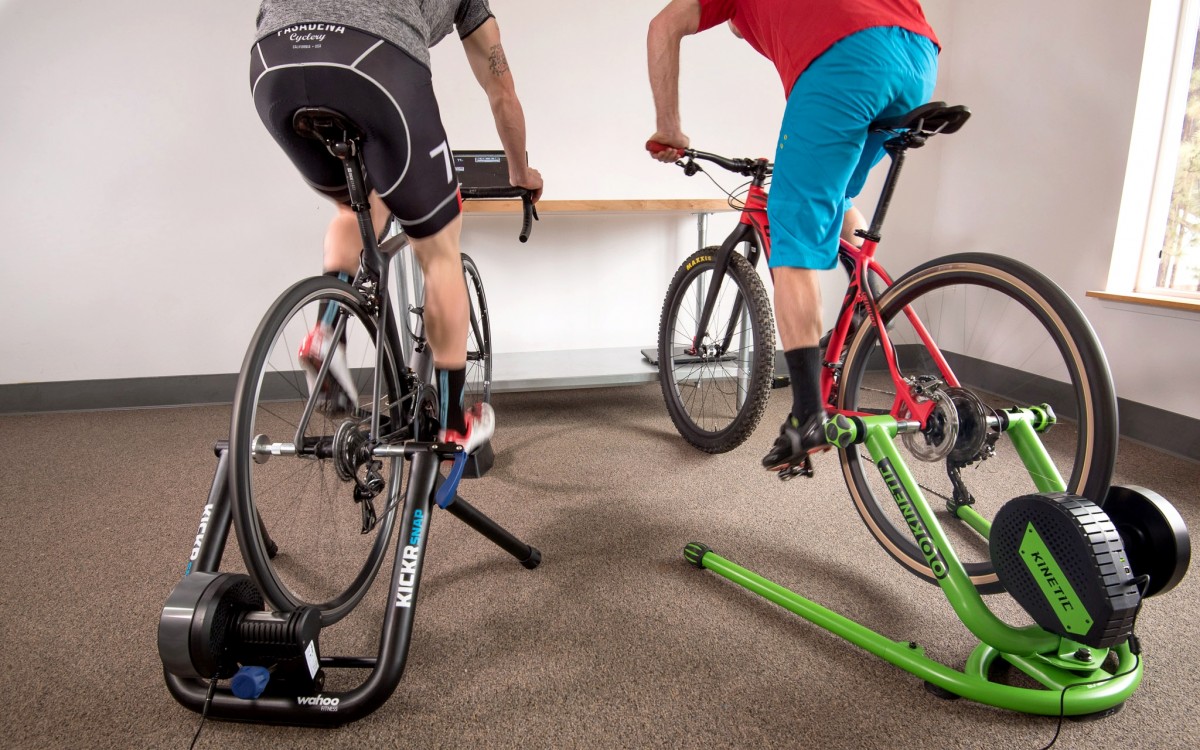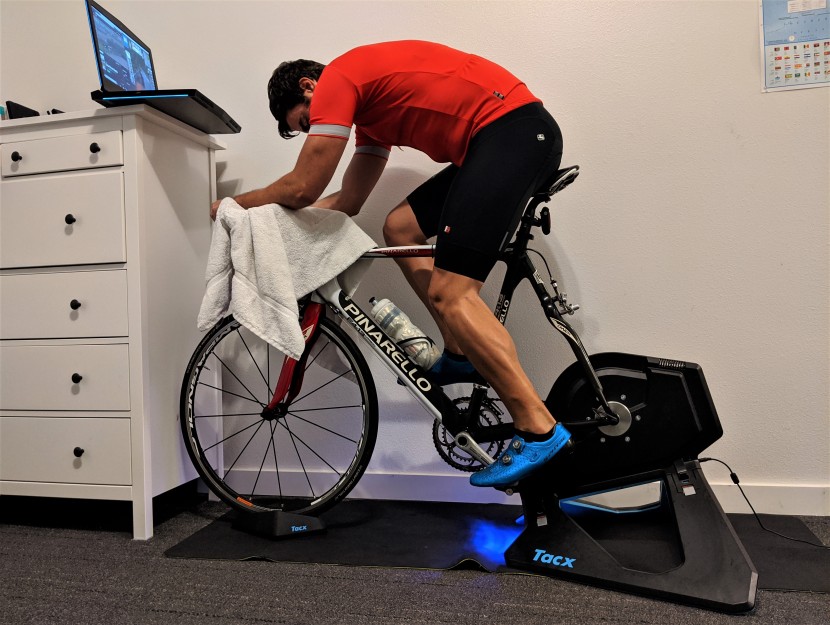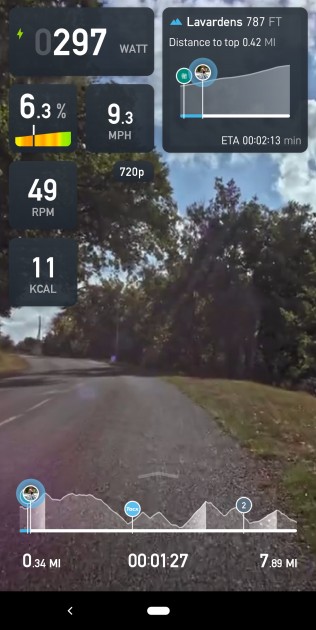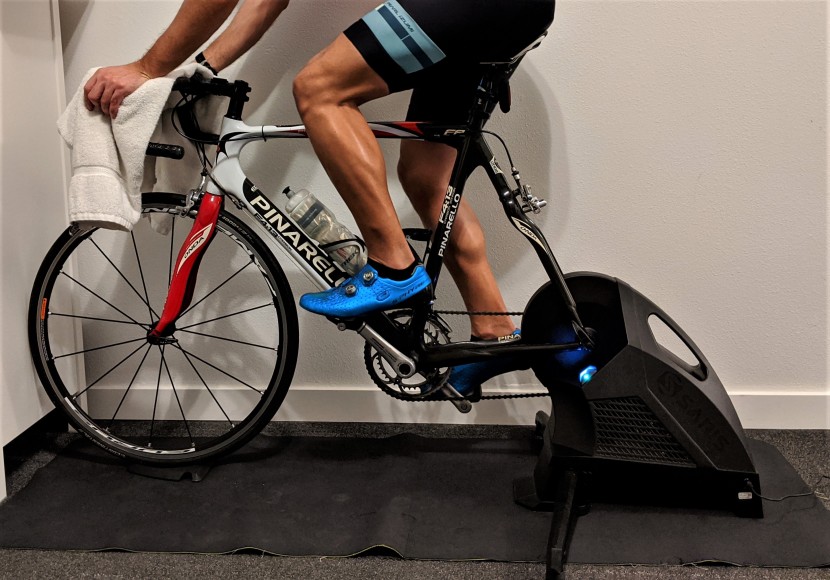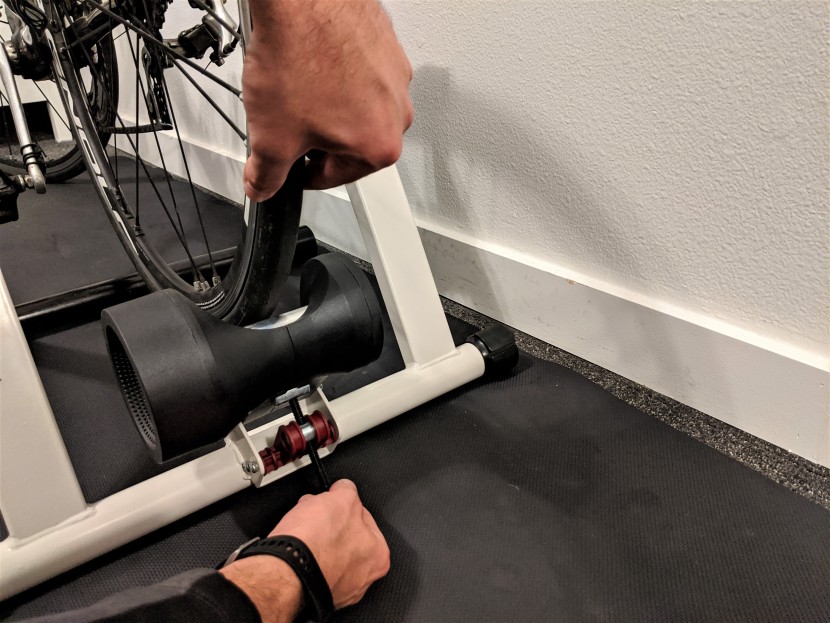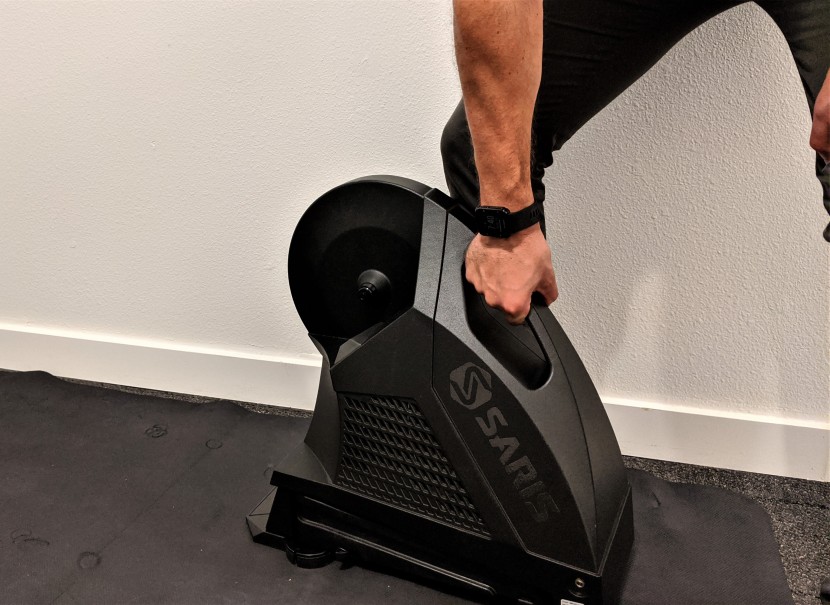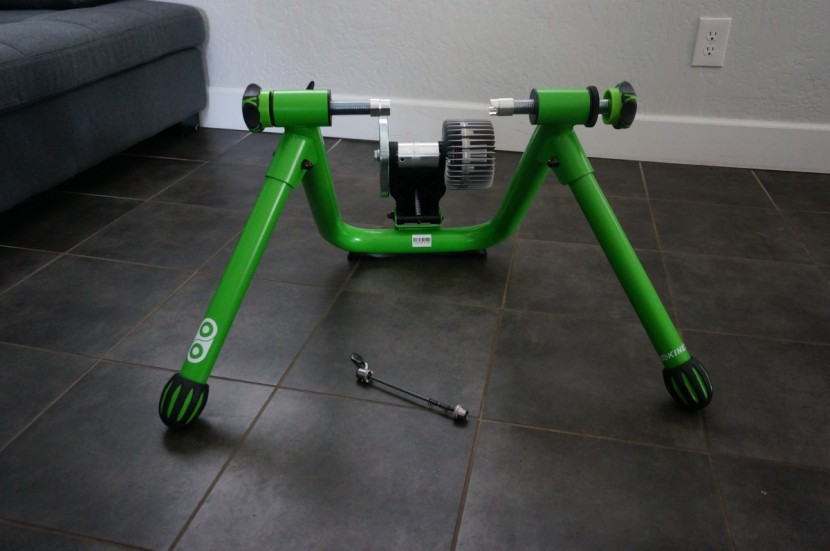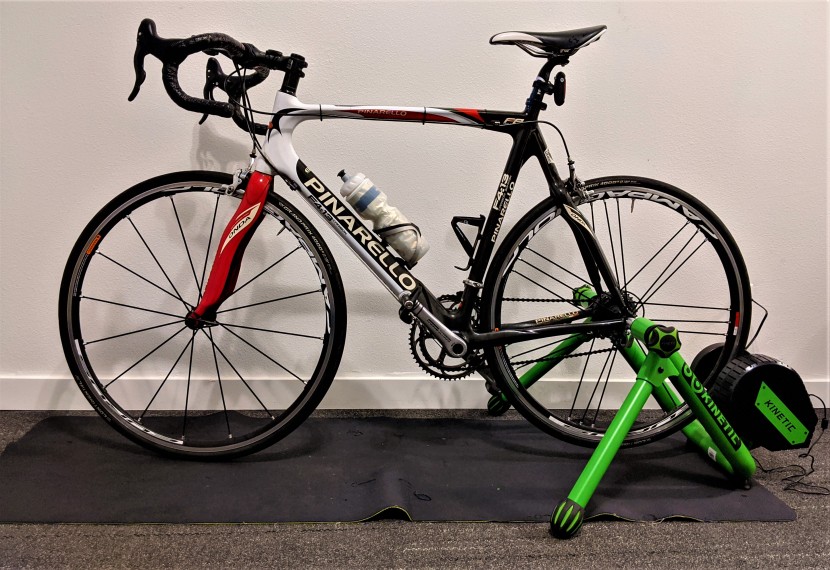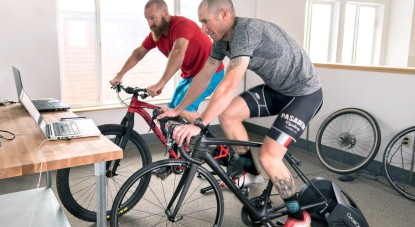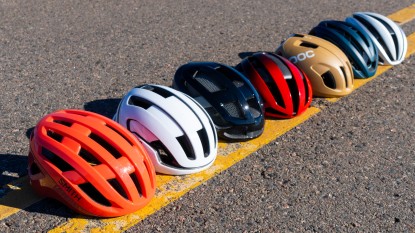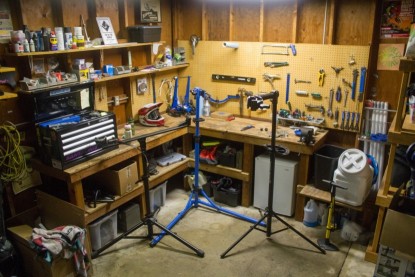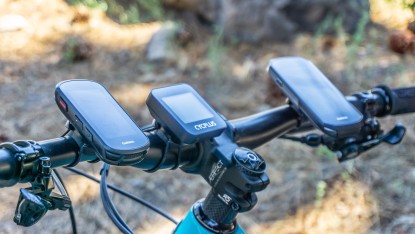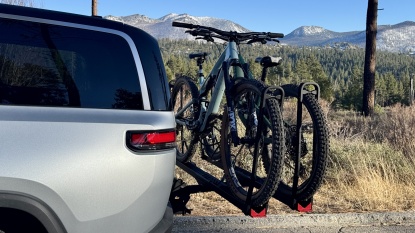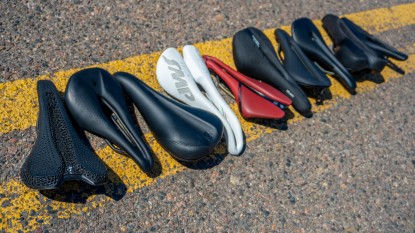Do I need a bike trainer? Should I buy a standard or smart model? All the pros are using direct drive. Are they better? Modern bike trainers range from basic tire drive models to impressively high-tech smart trainers. Add in the complexity of third-party apps to elevate your training regimen, and it can be tough to wade through the market and find the best bike trainer for your needs. This article aims to provide clarity as we go over some considerations to keep in mind when you're ready to set up your pain cave, suffer dungeon, or whatever macabre moniker you've given to your training environment.
Why You Need a Bike Trainer
Indoor bike trainers allow you to use the bicycle that you already know and love as a stationary indoor bike (or road-side, if you're warming up for a race). Many riders use a stationary trainer as a training tool for time-saving, structured workouts, or as a substitute when conditions outside are poor. It's really hard to find a better way to maintain your riding fitness. Cross-training is a great tool, but if you want to be fit for those early season races or gran fondos, you are going to need to put in some time on the bike. Having a bike trainer in your living space significantly increases the convenience of getting a workout in. Plus, a lot of the better trainers and training programs like Zwift, Sufferfest, and TrainerRoad really are very good. Not only are these programs engaging and entertaining, but they also help you maximize the efficiency of your workout.
Types of Trainers
Indoor trainers, also called Turbo trainers, have been around for a long time. Until recently, the type of resistance the trainer employed was the primary method of classification. The vast majority of trainers on the market used either a fluid, wind, or electromagnetic resistance source. Fluid trainers were thought to have the best or most realistic resistance curve, with the level of resistance being dependent on wheel speed. Within the last five to ten years, the indoor trainer market has drastically changed. Nearly all of the big players in the market now have smart trainers available.
Smart Trainers
What is a smart trainer? The definition has evolved with the market, but at this point, a smart trainer must do the following:
- Measure user output in watts using a power meter.
- Provide user-controlled resistance in the form of watts and grade simulation.
- Have a smartphone application for control and calibration.
- Be compatible with third-party applications such as Zwift and Trainer Road.
- Use one or both of the industry-standard communication protocols, ANT+ FE-C or Bluetooth Smart.
Smart trainers have many advantages over a standard fluid trainer. Most companies have some sort of in-house application for smart trainers, but there are also just tons and tons of third-party options out there. Some applications even allow the user to ride in a virtual world against or with other riders on their trainer. Plus, the entertainment and mental engagement factor associated with these applications can be a lifesaver for the cyclist locked indoors.
Applications like Zwift and Sufferfest are especially awesome here with their simulations. They talk to your trainer and match grades, so it feels real when you suffer up a slow, grinding hillside or attack up climbs just the way you would out in the real world. And you can do it all as you ride along some storied racecourse while watching a realistic video or through a virtual mock-up.
You get this experience with smart trainers because they control resistance based on a set program. That means simulations as described above or structured workouts, where you'll hit certain speeds, wattage outputs, or cadences, based on the particular training companion you're using and what you decide to set up. Some trainers and apps rely on ERG mode, which automatically adjusts resistance to match your cadence and with the power requirements of the training segment. So, without this feature, if you are putting out 100 W at 85 RPM, you would need to shift to a harder gear or increase your cadence or both to meet 200 W. With ERG, you just keep pedaling at 85 RPM, and the resistance will increase so that you crank out the 200 W without moderating yourself—you just have to push harder. It takes a few sessions to get used to it, but it's an excellent training tool.
Just in case you were interested in what the heck ERG stands for or means, it means ergasia, which is a Greek word. Zwift has quite a nice writeup on ERG mode and training.
Communication Protocols—An Editors' Note
Smart trainers are dependent upon applications to control resistance and create simulated riding experiences. All of the smart trainers we tested, except for the trainers from Kinetic, broadcast on both ANT+FE-C and Bluetooth Smart. Below we break down the difference in communication protocols, and why it matters to you.
A bit of history. When smart trainers began popping up on the market in mass, every brand utilized its proprietary wireless communication protocol. Also, the smart trainers available were generally only compatible with the manufacturer's proprietary app. For example, if you purchased a Tacx smart trainer, it would only work with the Tacx application. If a third party wanted to create an application for smart trainers, they would have to do all of the software engineering on a case-by-case basis for each brand that they wanted their application to support. Clearly, this business model was a huge detriment to the consumer.
ANT+FE-CFast forward a few years and Dynastream, the maker of the popular ANT+ wireless communication protocol, releases ANT+ FE-C. The FE-C portion stands for Fitness Equipment Control. Most of the big players in the trainer world jump on board, and there is suddenly a common two-way communication protocol that allows applications to receive data from smart trainers as well as control resistance. The ANT+ FE-C protocol revolutionized smart trainer applications by making it possible for an application to use the same communication protocol for almost every trainer on the market.
Bluetooth SmartSo now you are likely wondering where Bluetooth Smart figures into all of this? Bluetooth Smart is a low energy wireless transmission similar in function to ANT+, but it is open source and lacks a common communication standard. Many trainer companies use Bluetooth Smart for their smartphone applications, as most modern smartphones both IOS and Android are Bluetooth Smart enabled. These applications allow you to control your trainer with your phone without the need for any dongles or accessories. Some PC applications also use Bluetooth Smart for Mac and newer Windows computers.
So why does this matter to you? If you are in the market for a Smart Trainer, having both ANT+ FE-C and Bluetooth Smart communication capabilities maximizes connectivity. This will ensure that you have access to the largest range of apps. Also, it will allow the highest possible level of interconnectivity between the devices you will use to display applications during training. These devices include; PC, Smartphone, Tablets, and Garmin cycling computers.
Types of Smart Trainers
There are two types of smart trainers available, tire drive and direct drive. How the bike attaches to the trainer is the main differentiating feature.
Tire Drive Smart Trainers
Tire drive trainers use the tire and wheel of your bike to turn a drum that is attached to the resistance unit. The bike is clamped to the trainer at the rear axle, and a cam or tensioning device is used to force a smooth drum against the tire. As the tire turns, it rotates the drum, which is attached to the resistance unit. The two primary advantages of tire drive trainers are a lower price and not needing to remove your bike's rear wheel to use the trainer. The primary disadvantages are less accurate power measurement, need for more frequent calibration, excessive tire wear, and lack of versatility with mountain and cyclocross bikes.
Direct Drive Smart Trainers
Direct drive smart trainers take the place of your rear wheel. It's removed, and the bike frame is mounted directly to the trainer. The bicycle chain sits on a cassette that you'll mount to a hub, which is affixed to the trainer's axle. As the cassette and hub of the trainer turn, magnets or a belt transfer the movement to the trainer resistance unit.
Because you'll need to match your bike's drivetrain to the cassette on the trainer, you'll need to do a little research and planning. There are lots of players in the drivetrain componentry space, but the three big ones are Shimano, SRAM, and Campagnolo, and they come in various speeds (9-speed, 10-speed, 11-speed being the most common for newer rigs). Shimano is probably the most common, with the other two cleaning up the rest of the market. Generally, Shimano and SRAM set-ups will work with each other if the speeds match (10-speed Shimano to 10-speed SRAM), so if you run SRAM on your bike and your trainer comes with a Shimano hub and cassette, you should be okay if you run SRAM on your bike.
Campagnolo is a little obstinate here. Most trainers come with a Shimano hub already installed, so you'll need to search for Campy-specific hubs that aren't always cheap. You'll then need to either buy a new Campy cassette or transfer the one from your wheel, which would be quite a pain if you're not setting the trainer up for a full season. Some trainers even have Campy hub differences between models. The Tacx Neo 2 and Neo 2T, for example, have slightly different hubs for each model, and there's no way to avoid purchasing a whole new Campy hub for the newer model if we insist on running a Campy cassette.
Happily, you can sometimes find crossovers between Campy and the Shimano/SRAM gear; it just might not run like butter - and sometimes it might be a complete no-go. Clearly, there are a lot of considerations when mixing and matching groupsets and components, so make sure you've done your research so you aren't surprised when you start setting up your new toy(s). One of the best sources we found on this topic was CyclingTips, which does an excellent job of explaining what's going on with these components and saved us hours of confusion and troubleshooting.
The main day-to-day disadvantage of a direct drive trainer is the need to remove the rear wheel of your bike to use the trainer. Direct drive trainers also tend to be heavier and much more expensive than their tire drive counterparts.
Direct drive trainers have many advantages over tire drive models. The most important being more accurate power measurement. They are more stable, reduce drivetrain and tire wear, and need less frequent calibration. Direct drive trainers often offer better road feel. Larger flywheels and the lack of tire-to-drum friction are the primary reason for the more realistic road-like experience. Another advantage of the direct drive trainer is increased compatibility with a wider range of bicycle frames. Mountain bikes and other bikes with knobby tires tend to slip and create noise and vibration when used with a wheel drive trainer. Direct drive trainers do not suffer from this as the rear wheel is removed.
Standard Trainers
Standard trainers use wind, fluid, or magnetic resistance units. The vast majority of standard non-smart trainers are tire-drive units. Unless they are paired with a crank or hub-based power meter, you will not experience application-controlled resistance as you would with a smart trainer. Wind and fluid trainers have adjustable resistance based on the gear you are pedaling in or, more accurately, the speed of the rear wheel. Magnetic trainers often have wired resistance controllers that can be mounted to the handlebars, but also rely on shifting of gears for fine-tuning pedaling effort.
Compared to wind and magnetic resistance machines, the fluid trainers offer the most realistic road feel, with a progressive resistance curve that mimics the effect of changing gears to increase speed as you would on the road. Fluid trainers are also extremely simple to operate, all you have to do is pedal, and shifting gears will increase or decrease resistance. While manufacturers don't publish maximum resistance values, we have been unable to exceed the resistance curve of the fluid trainers we have tested even during hard sprint efforts in the 800-1200 watt range. That is not to say that they won't hit a wall at some point, but for most riders, the available resistance is more than adequate.
The main downside to a fluid as a form of resistance is poor road feel as compared to a smart trainer. The feeling of inertia that mimics the feel of road riding is minimal. In general, fluid trainers will rapidly spin to a stop when you stop pedaling, so gear changes must be done quickly with a minimal reduction in cadence and power; otherwise, it feels as if you are pedaling in quicksand. Smart trainers are, in general, much better at mimicking road feel due to advanced algorithms that allow the flywheel to continue to rotate when pedaling stops or during gear changes.
Making a Purchase Decision
So you have made it this far, and you are ready to buy a trainer. Here are a few things to consider before you click to purchase it.
If you aren't convinced you want a trainer, you might consider reading our best exercise bikes review to find a stand-alone stationary bike, some of which cost less than some trainers.
How Much Will You Use It?
If you plan to be on the trainer every day six months out of the year, then a smart trainer is your best choice, to alleviate boredom and keep your stoke high. Just going to use it every once in a while? Then a standard trainer might do the trick and save you a whole bunch of money.
What Bike Will You Use?
If you are only planning to use a road bike, then a tire drive trainer is a great option. If you plan to use a cyclocross or mountain bike, then you should consider a direct drive trainer. Knobby tires and tire drive trainers don't mix well. So if you are going to use a mountain bike with a tire drive trainer then add the expense of a slick trainer tire into your purchase plan. Also, pay close attention to our compatibility section in the individual product reviews. Some trainers will not work with certain axle and hub spacing configurations. If you're not sure what axle or hub spacing your bike has, swing by your local bike shop and ask before you commit to a purchase.
Price
Spending a full gross paycheck on a trainer is a big commitment. Assess your needs and make a decision based on what is important to you. Top of the line direct drive smart trainers are amazing tools that can truly alter your indoor experience while providing you with laboratory quality power analysis. Tire drive smart trainers offer the same level of entertainment but lack the accuracy and supreme road feel of a direct drive model, but they are half the price. Standard trainers are seriously lacking in the area of entertainment, but there is always YouTube. In the end, the addition of any indoor trainer to your training arsenal is bound to pay dividends in your spring fitness. Good luck and happy pedaling.

